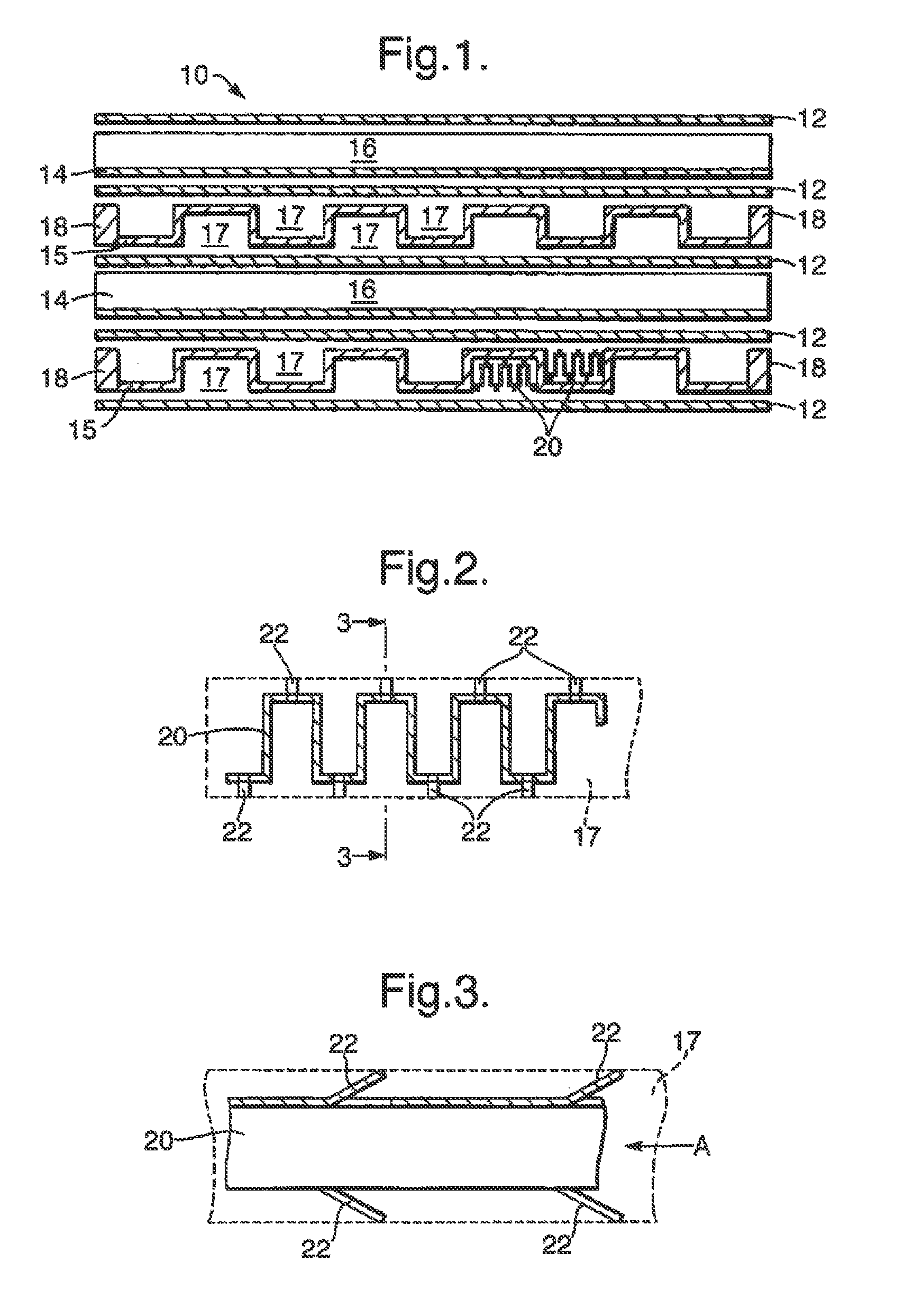Catalytic reactors
- Summary
- Abstract
- Description
- Claims
- Application Information
AI Technical Summary
Benefits of technology
Problems solved by technology
Method used
Image
Examples
Embodiment Construction
[0026]The invention is applicable to a wide range of different chemical reactions, particularly those involving gaseous reactants and requiring a catalyst. For example it would be applicable in a chemical process for converting natural gas (primarily methane) to longer chain hydrocarbons. This can be achieved by a two-stage process, shown in FIG. 8, and each stage might use a reactor of the invention. The first stage is steam reforming, in a reactor 801, in which steam is mixed with natural gas and heated to an elevated temperature (so as to reach say 800° C.) so that reforming occurs:
H2O+CH4→CO+3H2
[0027]This reaction is endothermic, and may be catalysed by a rhodium or platinum / rhodium catalyst in a flow channel. The heat required to cause this reaction may be provided by combustion of an inflammable gas such as methane or hydrogen, which is exothermic and may be catalysed by a platinum / palladium catalyst in an adjacent second gas flow channel of the reactor 801.
[0028]The gas mixt...
PUM
 Login to View More
Login to View More Abstract
Description
Claims
Application Information
 Login to View More
Login to View More - R&D
- Intellectual Property
- Life Sciences
- Materials
- Tech Scout
- Unparalleled Data Quality
- Higher Quality Content
- 60% Fewer Hallucinations
Browse by: Latest US Patents, China's latest patents, Technical Efficacy Thesaurus, Application Domain, Technology Topic, Popular Technical Reports.
© 2025 PatSnap. All rights reserved.Legal|Privacy policy|Modern Slavery Act Transparency Statement|Sitemap|About US| Contact US: help@patsnap.com



